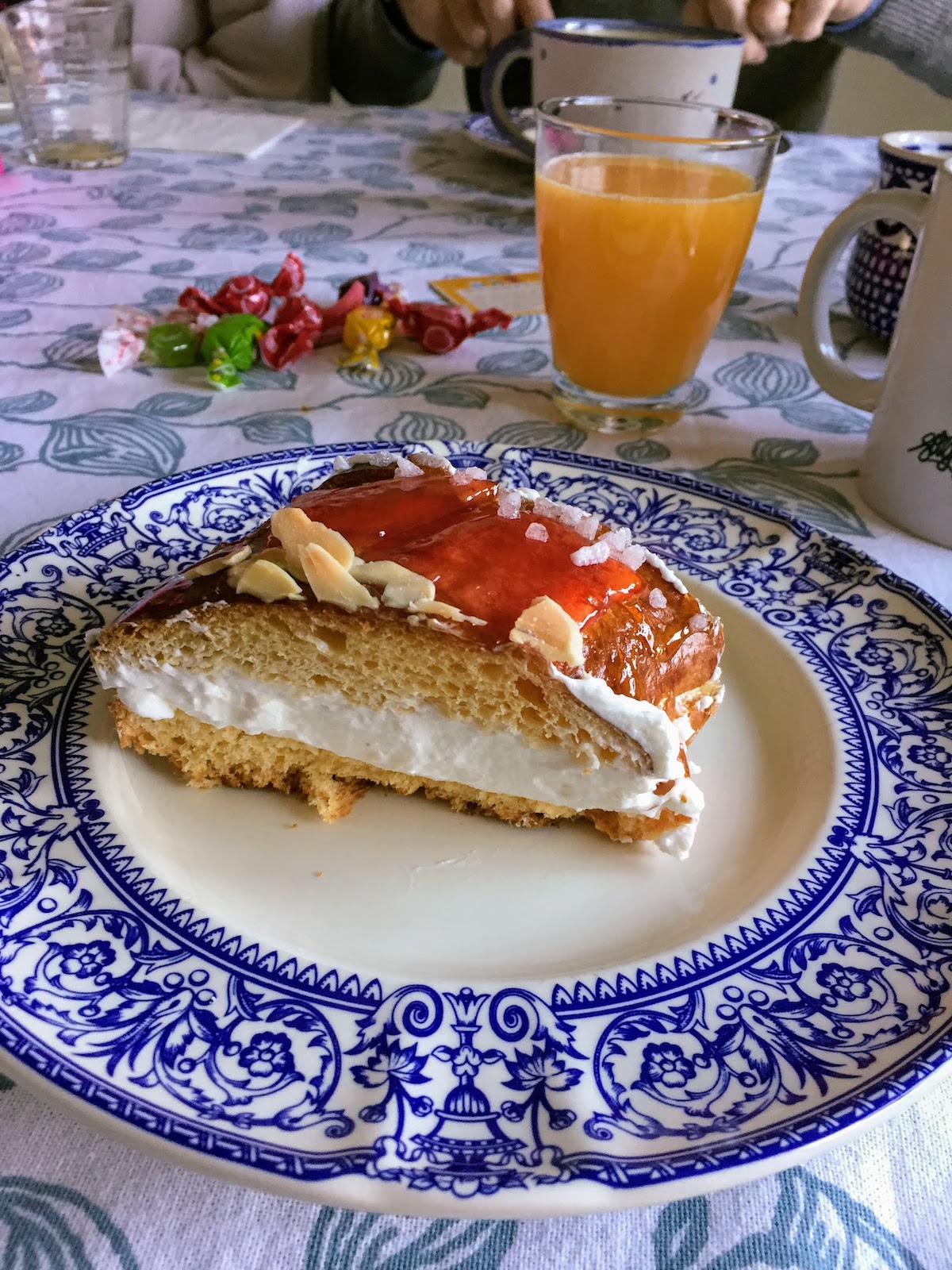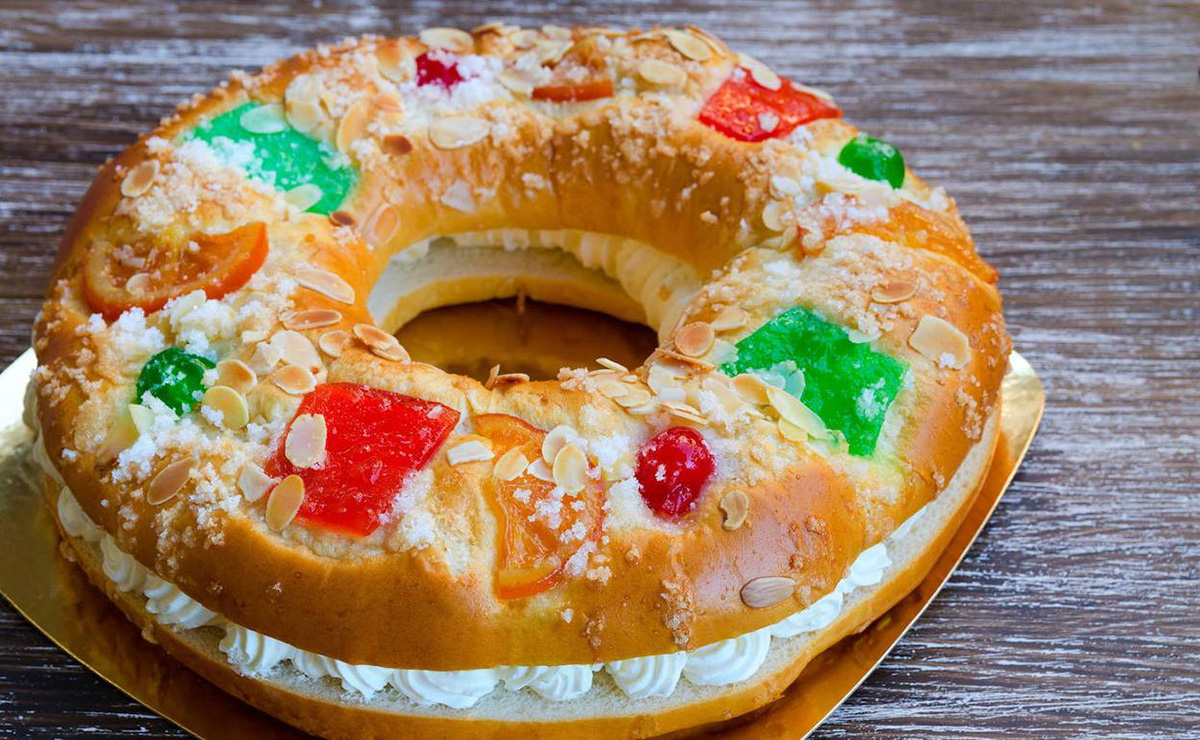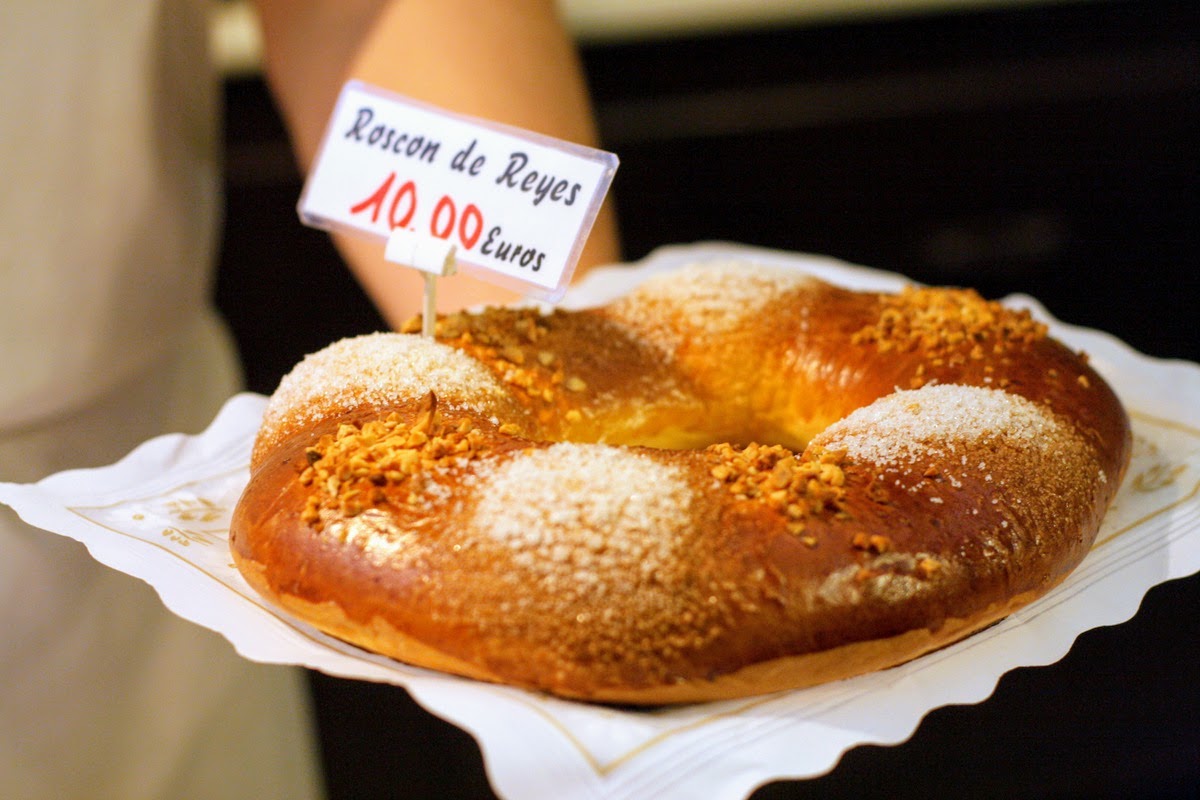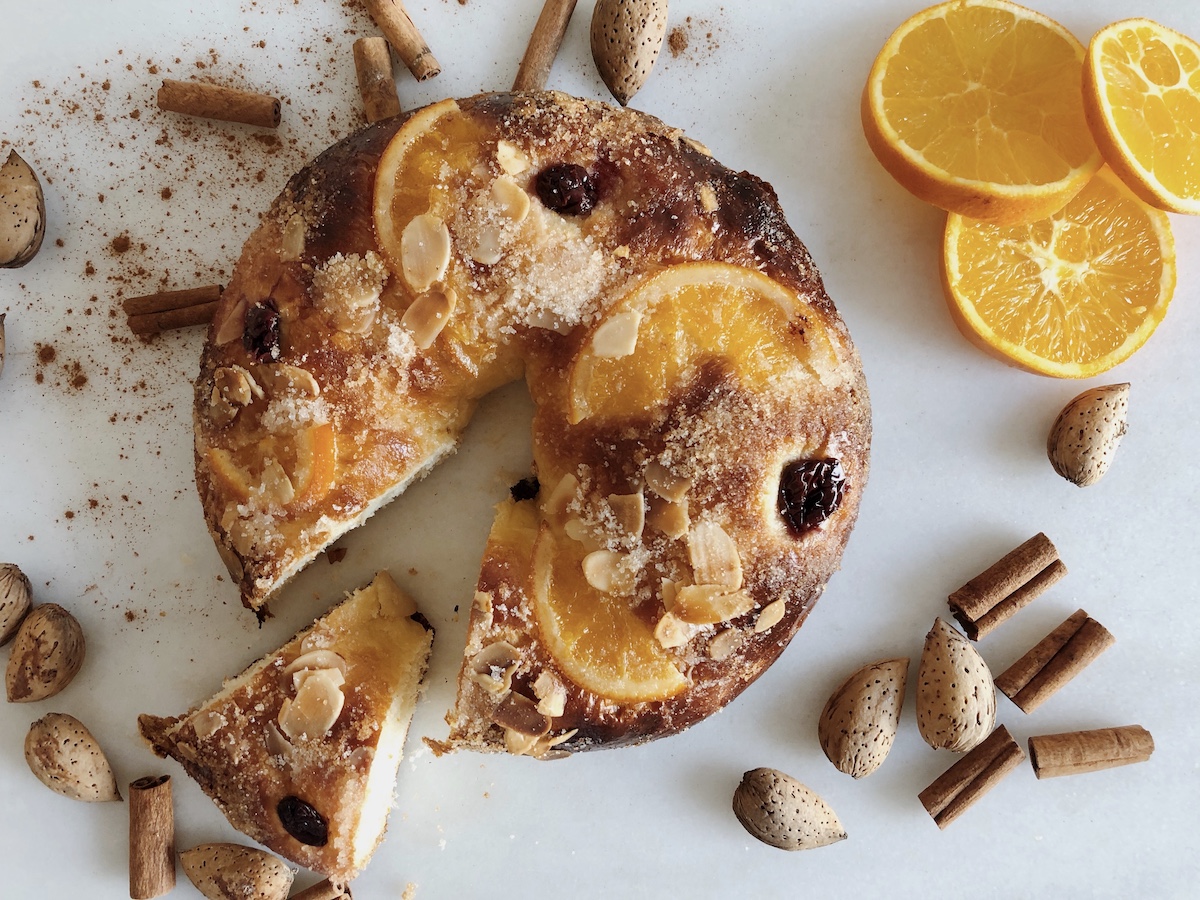All throughout Spain in late December and early January, families sit down to enjoy extravagant holiday feasts that last for hours, with conversation lingering around the table long after the last bite has been taken. The food itself varies from family to family, and you’ll likely never see the same spread twice.
However, there is one constant that appears in every home in Spain shortly after the new year: the one and only roscón de Reyes. If the promise of presents doesn’t make getting out of bed on a cold January morning worth it, this sweet treat certainly will.

As is the case with most Spanish winter holidays, a big part of Three Kings Day in Spain focuses on food. The delicious roscón de Reyes takes center stage and makes for the perfect festive breakfast, afternoon snack or dessert!
What Is Roscón de Reyes?
Roscón de Reyes (which in English roughly translates to “kings cake”) is a round or oval-shaped cake that does not look unlike a giant donut. With a sweet, creamy filling inside and candied fruit adorning the top, it gives off the appearance of a jeweled crown.
While Spain’s roscón de Reyes is often described in English as a cake, it’s actually more of a sweet bread (similar to a brioche). This makes it a bit drier than your average moist cake, but still delicious!
The filling of roscones can vary. Traditionally, however, roscones either have no filling or are filled with sweet whipped cream. We’ll talk more about some of the delicious variations in a little bit, but first, let’s take a look at how this iconic holiday treat came to be.

History of Roscón de Reyes
Despite its modern association with the Three Wise Men of biblical lore, roscón de Reyes comes from surprisingly pagan roots.
The ancient Romans often prepared a similar treat for Saturnalia, the winter solstice festival. Their version was a round cake containing figs, dates and honey.
Starting in the third century, the tradition of baking a dry bean into the cake caught on. The lucky person who got the piece with the bean earned the title of “king of kings.” Everyone treated them like royalty for the rest of the day.
As Christianity spread and gained influence over the Roman empire, the cake slowly became associated with Three Kings Day on January 6, a few weeks after the winter solstice. The first recorded mentions of what later became the roscón de Reyes in Spain itself date from the 12th century.
Similar recipes were recorded in France around the same time. These became the ancestors of Mardi Gras king cakes. French settlers likely brought them to Louisiana in the 19th century.
However, it wasn’t until the mid-1700s when the cake’s popularity really started to take off. King Philip V established it as a traditional holiday snack among the monarchy and nobility during his reign.
The custom gradually grew more and more commonplace until even the lower classes were eating roscón de Reyes on January 6. It even reached Latin America during the colonial period, and is still enjoyed there today on the holiday as well. Most Latin American countries refer to the cake as rosca de Reyes.

Spanish Kings Cake Today
Nowadays, you’ll find a roscón de Reyes in every Spanish home during the holiday season, typically enjoyed for breakfast on the morning of January 6. Even the game that was introduced during Roman times has survived, but with a twist.
The bean, once representative of the grand prize, has been relegated to a lower status. Now, the person who finds it must pay for the cake next year.
Instead, the winning slice is marked by a tiny figurine (usually) of a king. The winner gets to wear the paper crown that most roscones include in the box. Some cakes will use a small figurine of the baby Jesus instead of a king, or even of beloved pop culture characters!

How to Make Roscón de Reyes
Notice how we said “in the box.” That’s because in Spain, roscón de Reyes isn’t one of those treats most people make at home.
The recipe seems simple enough. The cake itself contains basic ingredients like flour, yeast, sugar, butter and spices—but looks can be deceiving.
While not impossible, it’s a time-intensive process and the dough can be challenging to work with, especially for amateur bakers. As a result, the overwhelming majority of Spanish families opt to purchase their roscón from a local bakery.
If you want to give it a shot and make Spanish kings cake at home, the good thing is that there are plenty of ways to customize it to your tastes. The main ingredients are fairly standard across the board; however, each roscón has a slightly different flavor due to the spices and other flavorings used.
For the dough, you’ll find recipes that infuse it with anise, rum, orange peel, and more! Some varieties also include sugar or almonds sprinkled on top along with (or in place of) the brightly colored fruit. No matter what your tastes are, you’re sure to find a roscón you’ll love.
The filling is also open to interpretation. While the standard cream-filled cake might be the most common image of roscón de Reyes, it’s far from the only variety. You’ll find roscones filled with everything from chocolate truffle to strawberry cream, and even some with no filling at all, which was the original version.
Want to put your baking skills to the test? Try this delicious roscón de Reyes recipe!

Roscón de Reyes in Spain FAQs
If your slice of roscón de Reyes includes a small figurine of a king, congratulations! You’re the “king” of the celebration and get to wear the paper crown that came with the cake. On the other hand, if your slice has a dry bean in it, you have to pay for the cake next year!
Today’s roscón de Reyes is based off of a similar cake that the ancient Romans prepared for the Saturnalia (winter solstice) festival. It later spread throughout Europe during the Middle Ages and became associated with Three Kings Day.
The holidays are all about feasting here in Spain! Typical festive food for Christmas, New Years, and Three Kings Day include seafood such as boiled shrimp and baked fish, roasted lamb or turkey, and shared plates tapas such as a plate of croquettes to share. In addition to roscón de Reyes, some common holiday sweets are shortbread cookies such as mantecados and polvorones, and a nougat-based candy bar known as turrón.
Update Notice: This post was originally published on December 13, 2018 and was updated with new text and photos on June 30, 2021.

Nice article to send to friends back in Australia. Thanks
I took some fun facts from this for a Spanish Trivia Game, thanks!
Yay! Happy to help 🙂
I would love to have 1 Roscon De Reyes, Greetings from California, United States of America.
Thanks for reading, Lilia! We hope you’re able to travel to Spain in the future to try the roscón! 🙂